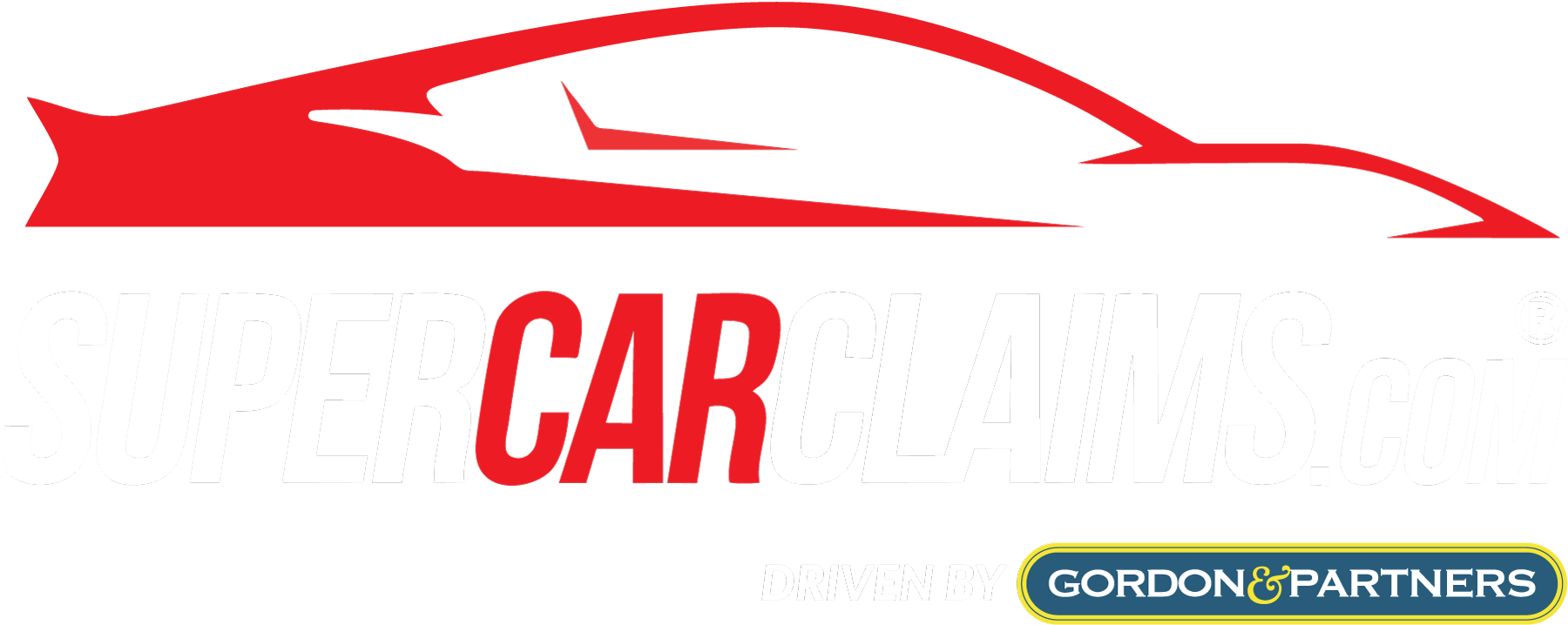Diminished value is the difference between a car’s market value before an accident and after repairs. If your supercar was damaged due to another party’s negligence, you may be entitled to recoup some of that loss through a diminished value claim, typically as a lump sum payment from the at-fault driver’s insurance company. Of course, while all cars lose value after an accident, just how much is usually up for debate, especially when it comes to the subjective value of exotic, collectible and luxury vehicles. So if you’re a luxury car owner, knowing how to calculate diminished value is essential to maximizing your claim and getting what you’re rightfully owed.
Types of Diminished Value
There are three types of diminished value:
- Inherent diminished value: This is the most commonly recognized type by insurance companies. It refers to a vehicle’s loss in market value due to its accident history, even if repairs are done to a high standard.
- Repair-related diminished value: This occurs when post-accident repairs are insufficient or poorly done, further reducing the car’s market value. This is added to the inherent diminished value.
- Immediate diminished value: This is the loss in market value right after an accident and before any repairs are made. Immediate diminished value claims are rare, as most owners opt for repairs or, if relevant, accept the vehicle as a total loss.
How is Diminished Value Typically Calculated by Insurance? ‘The 17c Formula’
The 17c Formula was developed after the 2001 Georgia Supreme Court case Mabry v. State Farm. The court found that State Farm was not adequately compensating customers for diminished value, and the formula was created as part of the settlement. Despite some flaws, it became an industry standard.
How Do You Calculate the Diminished Value of a Vehicle Using the 17c Formula?
Step 1: Determine Pre-Accident Value
To know how much value has been lost, you first have to know how much a car was worth before the accident. A good place to start is with a valuation guide such as Kelley Blue Book, NADA, or Edmunds. For luxury vehicles, specialized valuation guides like Hagerty may be most accurate.
Look up your specific vehicle, accounting for things like factory options and upgrades, as well as your vehicle’s pre-accident mileage. From there, look up the “clean retail” or “private party” valuation, not its trade-in value. You’ll want to consider MSRP and depreciation as well for cars less than three years old. For the most credible result, it’s a good idea to use multiple valuation sources and cross-check your findings.
Step 2: Apply a 10% Cap
The 17c Formula caps how much you can claim for diminished value at 10% of your vehicle’s pre-accident value. So if your car was worth $80,000 prior to the accident, your maximum potential claim amount is $8,000.
Note that this 10% cap is completely arbitrary and applies to all vehicles, regardless of vehicle type, damage severity, or repair quality. That’s a huge blind spot in the formula for diminished value, and a significant limitation for luxury and exotic vehicles. The cap becomes even more problematic for vehicles worth over $100,000, a frustrating problem considering that any empirical evidence or market research doesn’t back it up.
Step 3: Apply a Damage Multiplier
A damage multiplier adjusts the number above based on the extent of damage incurred.
- 0.00 = No structural damage, no replaced panels, purely cosmetic repairs
- 0.25 = 1-2 panels replaced, minor structural repairs, minimal frame pulling
- 0.50 = 3+ panels replaced, moderate structural repairs, measurable frame adjustments
- 0.75 = Major structural components replaced, significant frame straightening, airbag deployment
- 1.00 = Severe structural damage affecting safety systems, major frame reconstruction
If your vehicle required minor fender repair and a bumper replacement, you’re probably looking at a multiplier on the low end at 0.25. Only extreme repair needs such as a frame rail replacement or extensive safety system repairs will qualify you for a 1.00 multiplier and allow you to maintain the number calculated in step two.
Insurance companies typically downgrade damage multipliers during assessment. To ensure accuracy, document the repair process every step of the way and hold on to repair facility statements, both of which lend support to higher damage severity claims.
Step 4: Apply a Mileage Multiplier
Now it’s time to apply a mileage multiplier. The more miles on your vehicle, the less you’ll be able to claim for diminished value.
- 1.0 = 0-19,999 miles
- 0.8 = 20,000-39,999 miles
- 0.6 = 40,000-59,999 miles
- 0.4 = 60,000-79,999 miles
- 0.2 = 80,000-99,999 miles
- 0.0 = 100,000+ miles
As you might have guessed, the mileage multiplier only serves to further devalue vehicles, and doesn’t always appropriately apply to low-mileage collectible vehicles or diesel, electric, and high-end vehicles. In those cases, a mileage modifier exception is generally required.
Limitations of the 17c Formula
So how to determine diminished value of a vehicle after an accident in a way that’s actually fair to owners? It’s a tough problem, and one that Mabry vs. State Farm provided with a long-standing but ultimately imperfect solution.
There are myriad limitations with the 17c Formula, including a lack of consideration for vehicle category, class differences, or brand reputation impact. In addition, the 17c Formula ignores current market conditions and supply/demand dynamics, and doesn’t consider regional market variations. You also won’t find recognition of certification program impacts or adjustments for specialized purpose vehicles (performance, off-road, commercial, etc.). Further, in a complete disregard for collector or enthusiast vehicles, there are no provisions for limited production or discontinued models, or for color rarity or special edition status.
How the 17c Formula Undervalues Luxury Vehicles
When it comes to luxury vehicles, the 17c Formula often fails to account for the many mitigating factors associated with a car’s worth. This includes:
- Stricter accident history standards
- Higher lease rates with strict return conditions
- Specialized parts and materials
- Brand exclusivity and perfectionist culture
- More severe warranty implications
- Collector potential
- Aggressive community tracking of vehicle histories
- More thorough pre-purchase inspections
These and other overlooked factors result in diminished value calculations that are wholly insufficient for exotic and luxury vehicles. What’s the alternative then?
Calculation Alternatives and How They Apply to Different Types of Diminished Value
Other calculation methods, such as the Market Analysis Method, Professional Appraisal Method, or Dealer Certification Method, can offer more accurate calculations and are frequently used in diminished value claims for supercars.
Market Analysis Method
- How it works: This method assesses your vehicle’s value by comparing it to similar makes and models (both with and without accident histories), using verified sales data and current market trends.
- Appropriate Use: Best suited for establishing inherent diminished value, particularly where accident history alone has a measurable impact on resale value, regardless of repair quality.
- Rationale: It reflects actual buyer behavior and market depreciation patterns. This is especially critical in cases involving luxury or collector vehicles, where even minor incidents can result in disproportionately high value loss.
- Limitations: Access to comprehensive and credible sales data is required. Additionally, this method may not fully reflect unique characteristics such as aftermarket modifications or limited production features.
Professional Appraisal Method
- How it works: A certified automotive appraiser evaluates the vehicle’s condition, quality of repairs, and marketability to determine its post-accident fair market value.
- Appropriate Use: Most effective when addressing repair-related diminished value, especially in cases involving questionable repair work or when insurance carriers contest the extent of loss.
- Rationale: Provides an independent, expert valuation supported by detailed documentation, which can carry significant weight in legal or insurance proceedings.
- Limitations: Generally more costly and time-intensive than alternative methods, though often necessary in disputed claims or litigation contexts.
Dealer Certification Method
- How it works: Certain luxury and exotic vehicle dealerships offer Certified Pre-Owned (CPO) programs, some of which include diminished value assessments as part of their certification process.
- Appropriate Use: Applicable to both inherent and repair-related diminished value for vehicles that meet CPO eligibility standards.
- Rationale: Certification by an authorized dealer may help mitigate value loss by affirming the quality of repairs and current condition. However, it does not negate all depreciation associated with an accident history.
- Limitations: Certification programs are limited in scope, not universally available, and often involve non-refundable fees.
What Applies to Immediate Diminished Value?
Immediate diminished value is rarely claimed, but when it is, the same methods (market analysis or professional appraisal) can be used to determine the loss in value before repairs are made.
*Key Consideration—Immediate diminished value is typically only relevant if you sell the vehicle unrepaired or if it is declared a total loss.
Get Legal Assistance for a Diminished Value Claim
Our experts at SuperCarClaims.com know how to calculate diminished value in a way that actually makes sense for your unique vehicle class. Get in touch for assistance, and don’t let insurance get away with undervaluing (and underpaying for) your vehicle.


